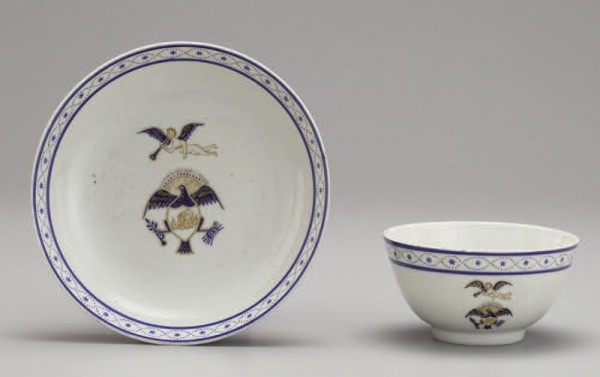
Teabowl and saucer, Jingdezhen, China, 1760–1775, decoration added in the United States ca. 1925. Porcelain. D. of saucer 5 1/2". (Reeves Collection, Washington & Lee University, Gift of Richard and Catharine Hubbard; photo, Robert Hunter.)
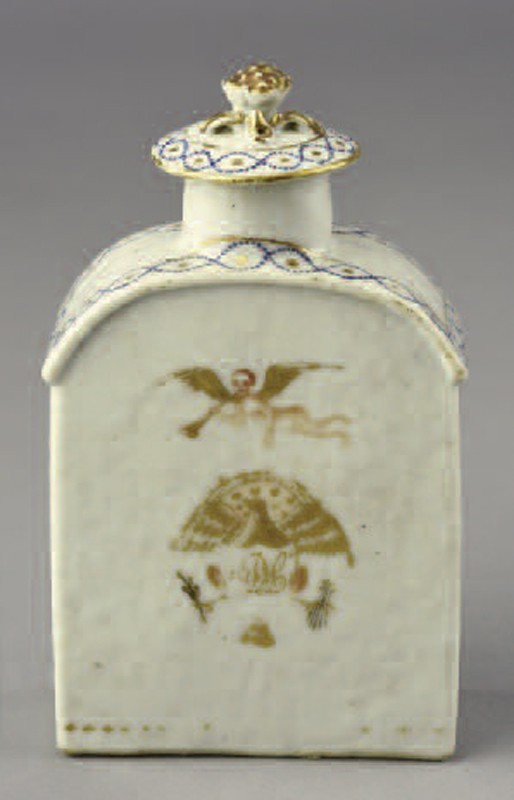
Tea caddy, Jingdezhen, China, 1760–1775, decoration added in the United States ca. 1925. Porcelain. H. 5 1/2". (Courtesy, Winterthur Museum, Bequest of Henry Francis du Pont, 1963.716a,b.)
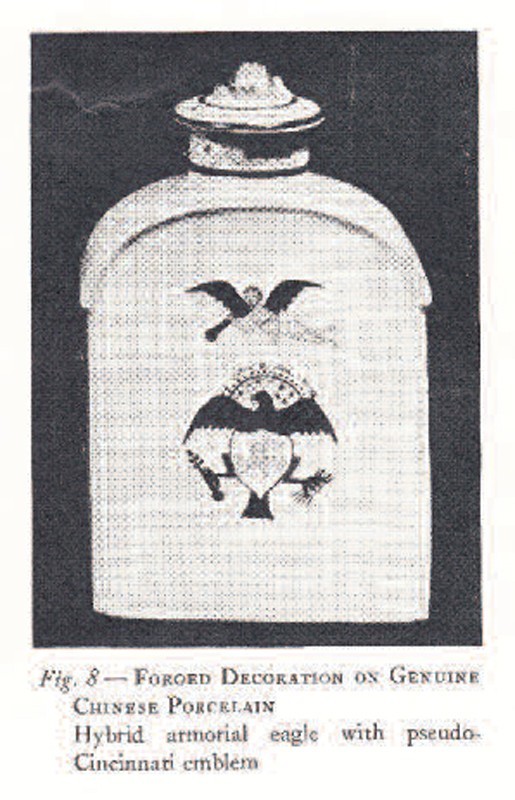
Illustration from Homer Eaton Keyes, “Imitations of Chinese Lowestoft,” Antiques 24, no. 4 (October 1933): 143.
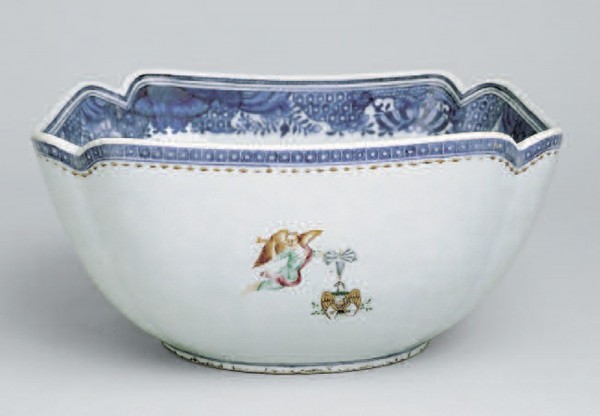
Salad bowl, Jingdezhen, China, 1784, decorated in Guangzhou (Canton), China. Porcelain. W. 9 1/4". (Reeves Collection, Washington & Lee University, Gift of the Edward H. Thompson Family.)
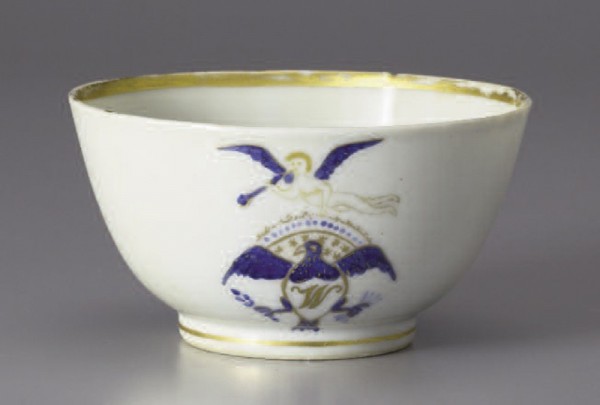
Teabowl, Jingdezhen, China, 1800–1820, decoration added in the United States ca. 1925. Porcelain. H. 1 7/8". (Reeves Collection, Washington & Lee University, Gift of Euchlin and Louise Herreshoff Reeves; photo, Robert Hunter.)
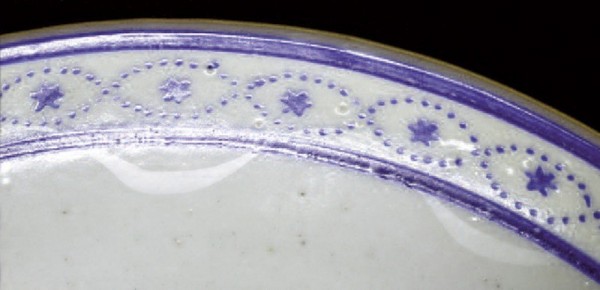
Detail of the saucer illustrated in fig. 1, photographed in raking light.

Detail of the teabowl illustrated in fig. 1, photographed in raking light.
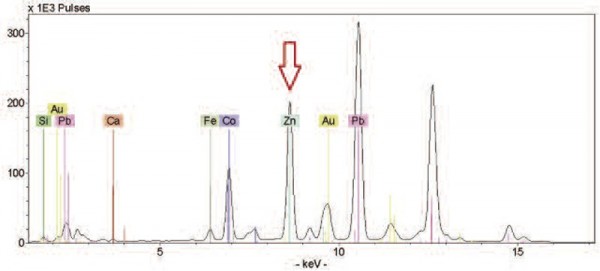
p-XRF analysis of the blue enamel on the eagle on the saucer illustrated in fig. 1. Note the peak representing zinc (Zn) shown at the arrow.

p-XRF analysis of the sepia enamel on the figure of Fame on the teabowl illustrated in fig. 1. Note the small but significant peak presenting chromium (Cr) shown at the arrow.
